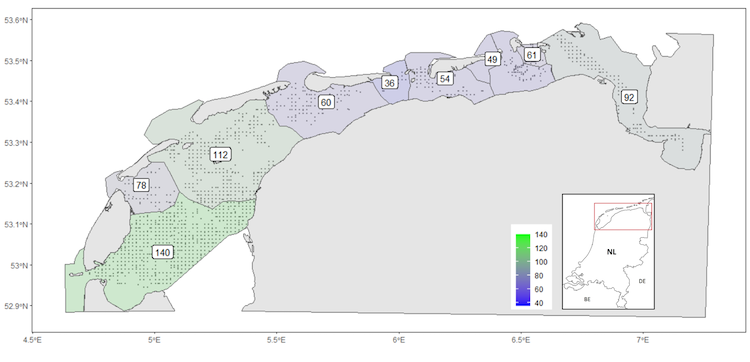O. Franken1,2*, S. Holthuijsen2, S. Witte2, J. Dickson2, K. Rehlmeyer1, K. Meijer1, Q. Smeele3, H. Olff1, T. van der Heide1,2, L. Govers1,2
1 Conservation Ecology Group, GELIFES, University of Groningen, The Netherlands
2 Department of Coastal Systems, Netherlands Institute for Sea Research, The Netherlands
3 Natuurmonumenten (Dutch Society for Nature Conservation), The Netherlands
The Wadden Sea is of great ecological importance and supports many species of birds and fish. These species depend on a plethora of benthic invertebrate species living in and on the sediment. While the intertidal mudflats are relatively well studied, the biodiversity and food web structure of the subtidal Wadden Sea is relatively unknown. Yet, information on this subtidal component of the Wadden Sea is essential if we want to understand changes that occur due to climate change, natural and human disturbances. The Wadden Mosaic project aims to shed light on this hidden part of the Wadden Sea. We will map biodiversity and link the benthic communities to habitat characteristics. In addition, we will test the feasibility and effects of possible management actions: i) (re-)introducing hard substrates, ii) facilitating epibenthic shellfish beds, iii) explore restoration possibilities for subtidal seagrass meadows and iv) test the effectiveness of excluding human activities from designated marine protected areas. Here, we will present the first results from a large sampling campaign in which samples were taken throughout the Dutch Wadden Sea with a grid resolution of 1 km, resulting in data from 1394 samples. From each sample we analyzed sediment characteristics; identified, counted and weighted the benthic species; and for the dominant species the stable isotope ratios were analyzed to reconstruct the subtidal food web. Overall, the results from the project will improve our understanding of the ecological functioning of the subtidal Wadden Sea, and predict the effectiveness of management practices aimed at sustaining or increasing biodiversity.

Figure: Observed species richness per tidal basin (numbers) and visualization of all sampling locations (grey dots) in the subtidal Dutch Wadden Sea.
I. Surname1*, F.N. Another-Surname2 , Y. Next-Surname2
1 University Name, Country; 2 Organization Name, Country
* Corresponding author: mail.name@organization.org


